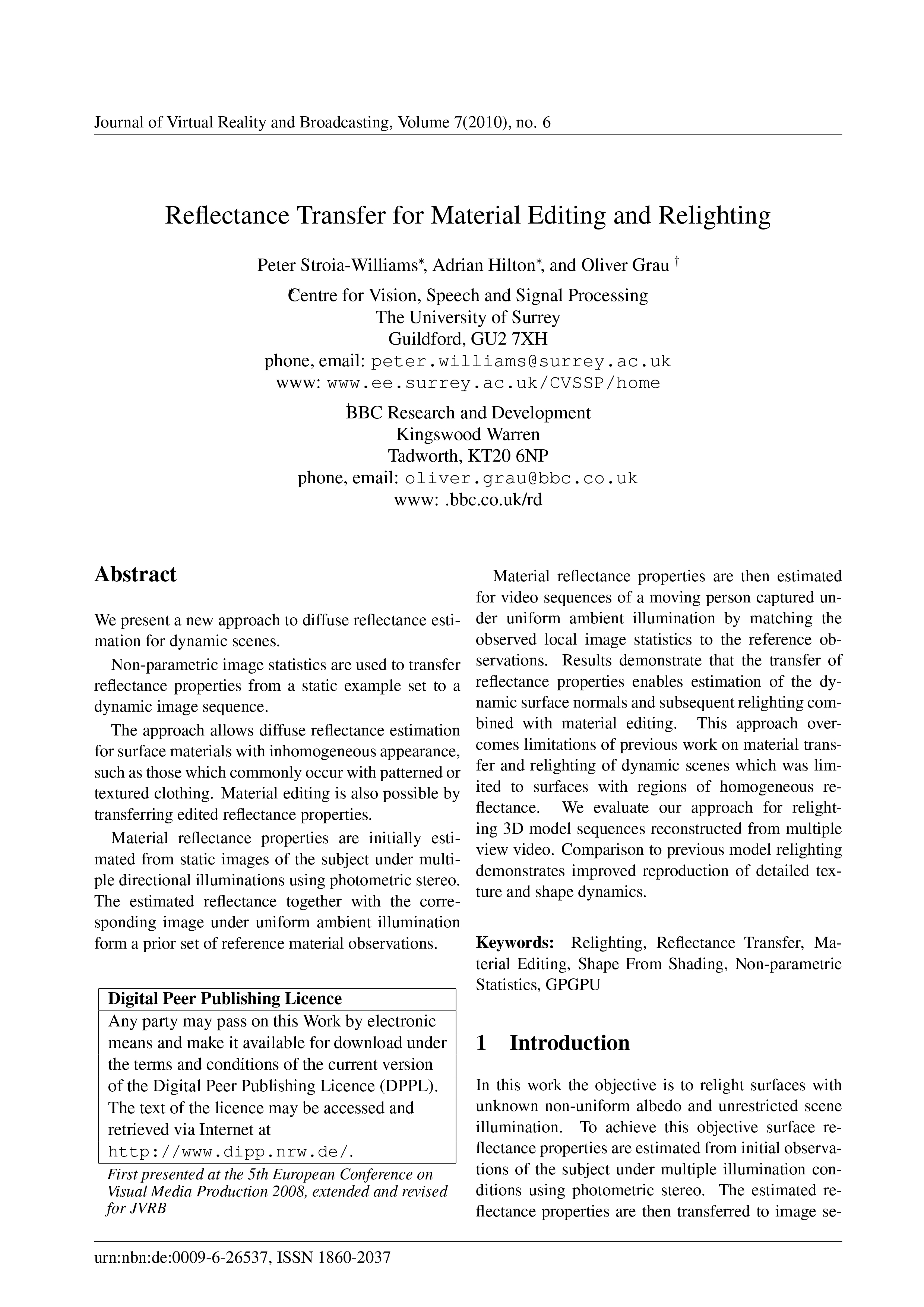Reflectance Transfer for Material Editing and Relighting
DOI:
https://doi.org/10.20385/1860-2037/7.2010.6Keywords:
Editing, GPGPU, Material, Non-parametric, Reflectance Transfer, Relighting, Shape From Shading, StatisticsAbstract
We present a new approach to diffuse reflectance estimation for dynamic scenes. Non-parametric image statistics are used to transfer reflectance properties from a static example set to a dynamic image sequence. The approach allows diffuse reflectance estimation for surface materials with inhomogeneous appearance, such as those which commonly occur with patterned or textured clothing. Material editing is also possible by transferring edited reflectance properties. Material reflectance properties are initially estimated from static images of the subject under multiple directional illuminations using photometric stereo. The estimated reflectance together with the corresponding image under uniform ambient illumination form a prior set of reference material observations. Material reflectance properties are then estimated for video sequences of a moving person captured under uniform ambient illumination by matching the observed local image statistics to the reference observations. Results demonstrate that the transfer of reflectance properties enables estimation of the dynamic surface normals and subsequent relighting combined with material editing. This approach overcomes limitations of previous work on material transfer and relighting of dynamic scenes which was limited to surfaces with regions of homogeneous reflectance. We evaluate our approach for relighting 3D model sequences reconstructed from multiple view video. Comparison to previous model relighting demonstrates improved reproduction of detailed texture and shape dynamics.
Published
2010-09-22
Issue
Section
CVMP 2008





